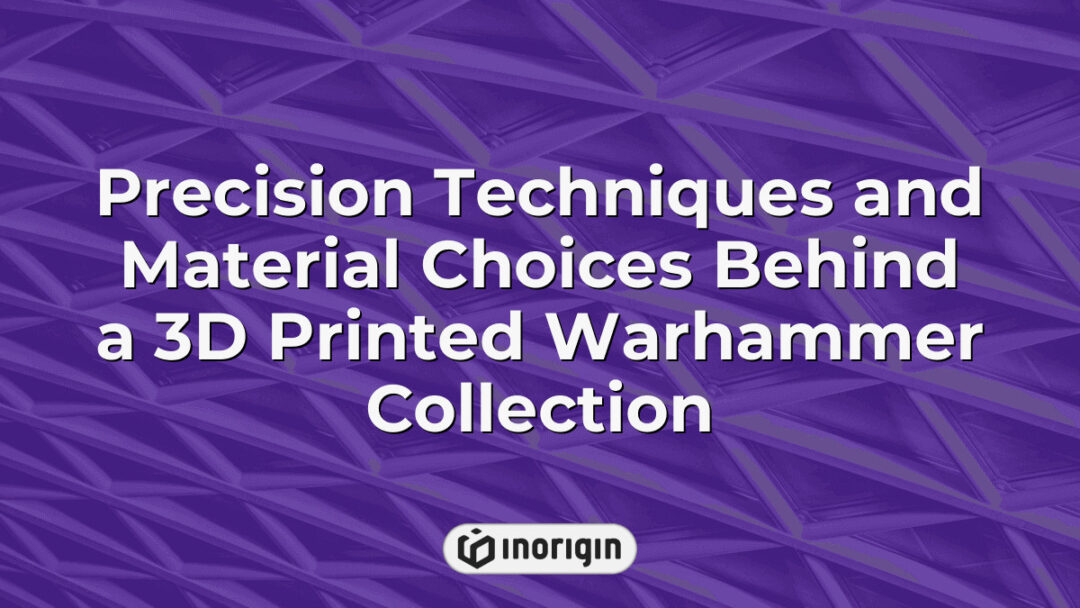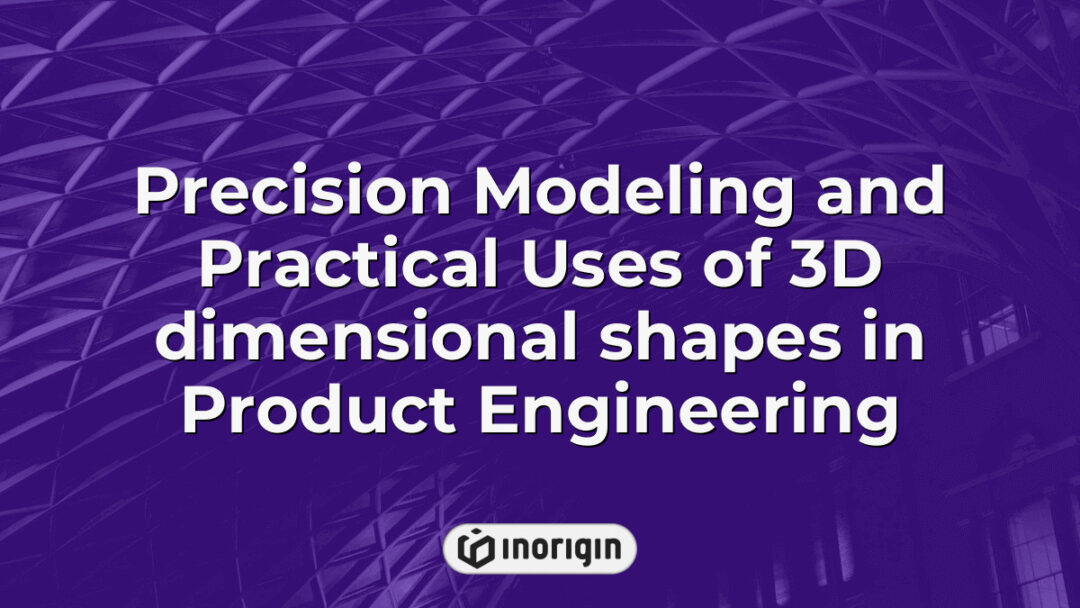In the realm of tabletop gaming, where creativity and strategy intertwine, the emergence of 3D printing technologies has ushered in a transformative era for enthusiasts of Warhammer. As avid players seek to deepen their engagement with this intricate universe, the ability to fabricate custom miniatures has not only democratized access but also ignited a passion that fuels artistic expression and innovation. This evolution, akin to turning over a new leaf, challenges traditional notions of craftsmanship and ownership within the hobby, simultaneously expanding the boundaries of what is possible in gameplay customization. The intersection of cutting-edge technology and rich narrative tradition underscores an exciting chapter in miniature wargaming that merits thorough exploration and scholarly inquiry.
| Aspect | Key Takeaway |
|---|---|
| Introduction to 3D Printed Warhammer | The 3D printed warhammer technology is transforming miniature wargaming by enabling highly detailed custom figures that enhance player creativity and personalization. |
| Benefits of 3D Printing for Warhammer | 3D printing allows for intricate designs and unique customization, fostering greater artistic expression and improving overall gameplay engagement. |
| Selecting Appropriate 3D Printers and Materials | Choosing printers with high resolution and suitable build volumes, along with durable materials like advanced resins, ensures precise and robust Warhammer models. |
| Model Sourcing and Design | Utilizing reputable online platforms and design software tools enhances model quality and allows tailored modifications aligned with personal or thematic preferences. |
| Essential Steps in the 3D Printing Process | Careful model preparation, accurate printer calibration, and thorough post-processing are vital to producing polished, tournament-ready Warhammer miniatures. |
| Ethical and Legal Considerations | Respecting intellectual property rights while embracing innovation maintains a balanced and compliant approach within the Warhammer 3D printing community. |
| Community Support and Resources | Engaging with dedicated forums and social groups offers valuable advice, file sharing, and collaborative opportunities for enthusiasts in this specialized niche. |
Exploring The World Of 3D Printing For Warhammer Models
The realm of 3D printing has ignited a revolution in the production and customization of Warhammer models, transforming traditional miniature crafting into an innovative design landscape. The advent of this technology allows for unprecedented levels of detail and personalization, as enthusiasts can create intricate designs tailored to specific themes or personal preferences. Additionally, various online platforms have emerged that cater specifically to hobbyists seeking unique d printed miniatures, thus facilitating a broader exploration of artistic expression. Consequently, while conventional manufacturing methods impose limitations on creativity due to mass-production constraints, 3D printing liberates creators by enabling them to experiment with complex geometries and novel aesthetics. This evolution not only enhances the individual’s engagement with the craft but also fosters a vibrant community sharing resources and designs. Consequently, the integration of 3D printed models within the Warhammer domain represents a significant shift towards greater inclusivity and adaptability in tabletop gaming culture.
Choosing The Right 3D Printer And Materials For Your Warhammer Projects
The process of selecting an appropriate 3D printer and the materials therein for Warhammer projects can be likened to navigating a labyrinth, where myriad pathways symbolize the various options available. The advent of 3D printing technology has revolutionized model creation, allowing enthusiasts to transform digital STL files into tangible pieces that populate their gameboards. When choosing a 3D printer, several critical factors must be considered: print resolution, build size, and ease of use are essential aspects that directly impact the quality and detail of printed models. Furthermore, the choice of materials—ranging from standard PLA to flexible resins or durable filaments—plays a pivotal role in determining not only the aesthetic qualities but also the functional durability of d printed components. Therefore, understanding these elements ensures that hobbyists make informed decisions tailored to their specific needs within this intricate arena. Attention to these details ultimately leads to more rewarding creative outcomes, enhancing both gameplay experience and artistic expression in one’s Warhammer endeavors.
Designing And Sourcing 3D Models For Warhammer
The endeavor of designing and sourcing 3D models for Warhammer may often resemble a modern digital gold rush, where aspiring creators might believe that simply unearthing the perfect d model will lead to boundless glory—or at least an impressive tabletop display. First and foremost, it is essential to recognize that not all sources are created equal; while some platforms provide high-quality designs conducive to effective 3D printing, others might offer prints reminiscent of pixelated nightmares. Thus, due diligence in selecting reputable designers or established repositories becomes paramount in ensuring that the resulting products meet both aesthetic and functional standards. Moreover, employing software tools designed for creating or modifying d printed models can enhance customization options further—allowing enthusiasts to tailor their armies down to minute details like insignias or personalized features, albeit with the inherent risk of encountering technical challenges that could transform excitement into frustration. As multiple avenues exist for acquiring these models—including community forums, online marketplaces, and dedicated websites—the diversification of available resources indicates a rich ecosystem ripe for creative exploration but also necessitates discernment regarding quality assurance. Ultimately, engaging thoughtfully with both design processes and sourcing strategies can transcend mere completion of projects; rather it fosters a dynamic interaction between creativity and technology within the Warhammer universe.
Step-by-Step Guide To Printing Your Warhammer Figures
The process of 3D printing Warhammer figures involves several critical steps that must be meticulously followed to ensure quality results. Initially, the selection of appropriate 3D models is essential; these can either be sourced from online repositories or custom-designed using CAD software. Following this selection phase, preparation for 3D printing requires converting the digital model into a format compatible with slicing software, which transforms the model into machine code by generating layers and paths for the printer to follow. Subsequently, before initiating the actual print job, it is crucial to calibrate the 3D printer accurately to maintain precision during the d printing process. Factors such as temperature settings, bed leveling, and filament type significantly influence the final product’s structural integrity and overall appearance. Once calibrated, one can proceed with the printing itself, monitoring progress to address any potential issues such as warping or misalignment promptly. After completion of the print job, post-processing techniques including cleaning up excess support material and applying surface finishing techniques will enhance both aesthetic appeal and durability in delivering high-quality d printed Warhammer figures ready for assembly or painting.
Ethical And Legal Considerations In 3D Printing Warhammer
The intersection of 3D printing and the Warhammer gaming community presents a complex landscape defined by ethical and legal considerations. On one hand, the burgeoning accessibility of digital models offers enthusiasts unprecedented opportunities to create personalized game pieces that reflect individual creativity. Conversely, this ease of creation raises questions regarding intellectual property rights held by creators such as Games Workshop, which has established trademarks on its design assets. Moreover, while some advocates argue for open-source sharing to foster innovation within the hobby, opponents contend that unauthorized reproduction undermines the commercial viability of officially licensed products. As these divergent views illustrate, navigating the realm of 3D printing requires careful scrutiny of legal frameworks surrounding copyright infringement and patent protections. Balancing personal expression through custom d models with respect for existing copyrights becomes essential in fostering both artistic freedom and compliance with established laws governing creative works. Ultimately, understanding and addressing these ethical dimensions is vital for sustainment within the ever-evolving landscape of 3D printed Warhammer figures.
Frequently Asked Questions
What Is The Cost Comparison Between 3D Printing Warhammer Models And Purchasing Them From Official Retailers?
The cost comparison between 3D printing Warhammer models and purchasing them from official retailers presents a significant financial consideration for hobbyists. Statistics indicate that, on average, traditional retail prices for Games Workshop miniatures can range from $30 to $100 per model, depending on complexity and size; conversely, the typical expenses associated with 3D printing may amount to approximately $5 to $20 per model when accounting for filament costs and equipment amortization over time. While initial investments in a suitable 3D printer can be substantial—often exceeding $200—the long-term savings accrued through the ability to produce multiple figures using digital files becomes apparent. Furthermore, accessibility to downloadable STL files has proliferated due to the growth of online platforms dedicated to tabletop gaming resources, allowing enthusiasts not only greater flexibility but also potential monetary advantages compared to conventional purchases. Nevertheless, it is essential to consider factors such as print quality, time investment related to setup and actual printing processes, along with legal implications regarding copyright infringement when deciding between these two options. The variability in overall expense thus warrants careful evaluation by individuals seeking involvement in this popular hobby.
How Can I Ensure The Quality Of My 3D Printed Warhammer Models?
To ensure the quality of 3D printed Warhammer models, various factors must be considered throughout the printing process. For instance, a hypothetical case could involve a hobbyist who decides to print a complex and detailed model of a Warhammer character. To achieve optimal results, it is essential to select high-quality filament or resin appropriate for the specific printer type; this choice significantly influences the final product’s durability and detail retention. Furthermore, preparing the model meticulously through software such as CAD programs can enhance precision during printing by reducing errors related to scaling and orientation.
Moreover, proper calibration of the 3D printer stands out as a critical step in producing satisfactory outcomes. This includes adjusting parameters such as layer height, temperature settings, and print speed according to the specifications provided by material manufacturers and best practices established within 3D printing communities. Post-printing processes—including cleaning, sanding, and priming—are also vital in reinforcing visual aesthetics while ensuring structural integrity. Employing these methods fosters an environment where consistently high quality can be achieved across multiple prints.
Ultimately, adopting rigorous protocols throughout both the preparation stages and post-processing phases will not only elevate individual project outcomes but also contribute to broader advancements in custom 3D modeling practices within the gaming community.
Are There Any Communities Or Forums Dedicated To 3D Printing Warhammer Models?
The proliferation of digital technology has led to the establishment of numerous communities and forums dedicated to 3D printing Warhammer models; but what resources are available for enthusiasts seeking support and guidance? These online platforms, such as Reddit’s various subreddits and dedicated Facebook groups, function as hubs for information exchange among hobbyists. Members typically share tips about printer settings, filament selection, and design modifications while also showcasing their completed works. Furthermore, specialized websites and Discord servers serve as invaluable repositories for files that can be utilized with 3D printers, facilitating access to a broad range of model designs—from custom characters to terrain pieces specific to the Warhammer universe. Collectively, these spaces not only promote camaraderie within the community but also create an environment in which knowledge is shared and collaborative problem-solving occurs.
One useful tip when browsing these forums is to contribute by sharing personal experiences or insights gained during the 3D printing process. Engaging actively within these communities can enhance both individual learning experiences and foster relationships with other hobbyists who may offer unique perspectives or assistance related to particular challenges encountered during 3D printing endeavors.
What Common Mistakes Should Beginners Avoid When 3D Printing Warhammer Figures?
When engaging in the 3D printing of Warhammer figures, several common mistakes often hinder the quality of initial outcomes. First, improper calibration of the printer can lead to significant discrepancies in print dimensions and surface finish; therefore, ensuring that all components are accurately calibrated prior to printing is essential for achieving optimal results. Furthermore, selection of inadequate materials may adversely affect both durability and aesthetic appeal. Utilizing low-quality filament or resin can result in prints that lack structural integrity or exhibit unwanted imperfections such as warping or layer separation. Another frequent oversight involves neglecting proper model preparation; failing to repair models before slicing—such as removing non-manifold edges or reversing flipped normals—can produce failed prints or those with unanticipated errors. Additionally, it is crucial to consider appropriate settings for layer height and infill percentage based on the intended application of the figure; an overly thick layer height could diminish detail while insufficient infill might compromise stability. Awareness and avoidance of these pitfalls enable beginners to achieve more reliable and satisfactory results when embarking on the task of 3D printing Warhammer miniatures.
Can I Use My 3D Printed Models In Official Warhammer Tournaments Or Events?
The question of whether 3D printed models can be utilized in official Warhammer tournaments or events raises important considerations regarding both legality and community acceptance. In general, Games Workshop—the company behind the Warhammer franchise—has specific regulations concerning the use of miniatures that are authored by its design team. While these rules primarily pertain to proprietary intellectual property, there may also exist stipulations relevant to custom-made figures that mimic official models. An examination of most tournament guidelines indicates a tendency toward a strict adherence to standardization; thus, participants often find themselves navigating an intricate framework where only officially licensed products are permitted.
This dichotomy fosters debate amongst players about individuality versus conformity within competitive play environments. On one hand, proponents of using 3D printed models argue for creativity and personal expression through customization and innovation. Conversely, critics insist that maintaining uniformity across model types ensures fairness during competitions and preserves the integrity of the game itself. Given this context, potential entrants into formal gaming events must thoroughly research each venue’s policies on miniature usage prior to participation.
Ultimately, while some local leagues might adopt more permissive stances towards 3D printed figures based on player consensus and community engagement, major sanctioned events typically uphold stringent regulations aligned with Games Workshop’s position on its branded content. It is imperative therefore for participants wishing to utilize 3D printed models to remain informed of evolving rules and organizational norms within the extensive tapestry of official Warhammer settings.
Conclusion
The intersection of 3D printing and Warhammer models heralds a new era of creativity and customization. As technological advancements continue to shape this hobby, enthusiasts stand at a crossroads where imagination intertwines with innovation, fostering an environment ripe for exploration yet demanding careful consideration of ethical and legal boundaries.
Related posts:
- Precision Techniques and Legal Boundaries in 3D printed 40k Miniatures
- Precision Crafting and Material Selection for 3D Printed Miniatures in Gaming and Collecting
- Precision and Detail: Best 3D Printer for Miniatures at Inorigin’s 3D Printing Studio
- Precision Techniques and Material Selection for 3D Print Miniatures at Inorigin
- Precision and Detail Excellence with a 3D printer for miniatures
- Advanced Techniques for Maximizing Benefits with idol queens production cheat engine




